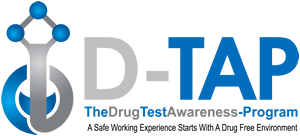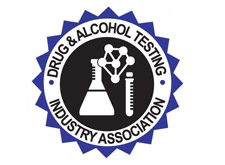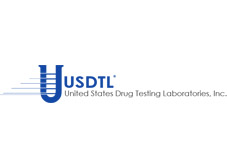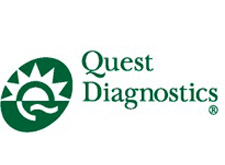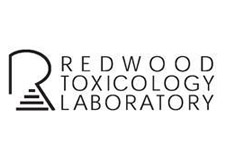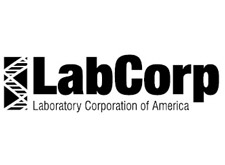Drug Abuse Overview
Today’s young people are faced with more choices than their parents had just 20 or 30 years ago.
 Cell phones, chat rooms, instant messaging, cable TV, email, and ipods- the world is changing at a rate that grows every day. We have instant and unfiltered access to information, products, media, and people. While this age of technology can be very exciting, it can also be quite overwhelming and brings new challenges to the family structure. Our kids now have tools that enrich their lives in some ways, but also raise the level of responsibility that they must assume at a young age. This new independence and accessibility makes our kids even more vulnerable to the allure of drugs than ever before.
Cell phones, chat rooms, instant messaging, cable TV, email, and ipods- the world is changing at a rate that grows every day. We have instant and unfiltered access to information, products, media, and people. While this age of technology can be very exciting, it can also be quite overwhelming and brings new challenges to the family structure. Our kids now have tools that enrich their lives in some ways, but also raise the level of responsibility that they must assume at a young age. This new independence and accessibility makes our kids even more vulnerable to the allure of drugs than ever before.
Every family and every child today is exposed to an ever growing presence of drugs. It is not just the “troubled” teens and slackers that are using drugs. Honor students, athletes and ordinary kids are unable to avoid drugs at school, parties, and friends’ homes. Temptation, curiosity and desensitization by the media lead otherwise good kids to make bad choices. Stable families and good schools provide only some protection. In interviews with students who use drugs with their parents, it is clear that there is no absolute barrier to drug use. Children of physicians, lawyers, and law enforcement officers have all become casualties of the drug problem.
By the time an adolescent finishes high school, he/she runs a risk of becoming one of the “casualties” of today’s epidemic of drug use. According to the most recent studies conducted in our nations school systems, 54% of all high school students will have used an illegal drug by the time they become seniors. These students are doing far more than “just” smoking marijuana – 82% have used cocaine and roughly 2% have tried heroine. They have far more to choose from than their parents did. Today, drugs like Ecstasy, Ketamine, GHB, and other substances are just as available as marijuana was only a few years ago. These drugs can have short and long term effects that can interfere with intellectual, emotional, and physical development, as well as produce more immediate dangers.
Many parents recall their own adolescence and wonder whether a little marijuana use or even experimentation with “harder” drugs is such a bad thing. After all, they survived, so how bad could it be? This view, more common than many would admit, is mistaken on several points. Drugs today, including marijuana, are more potent that they were even 15 years ago. In addition, newer synthetic drugs, such as Ecstasy and GHB, are used along with the more traditional intoxicants of alcohol and marijuana. These drugs are dangerous; they not only present a risk for habitual use and dependence, but also can produce abrupt and dramatic effects, including overdose and death.
In addition to the dangers the drugs themselves pose, there is the threat from the environment where adolescents frequently acquire them. “Club drugs” are used at “raves” or parties where supervision is lacking, and the “underground” nature of the event fosters secrecy, unsafe sex, and impaired judgment. This environment leaves teens vulnerable to others to prey on them – to both introduce them to drugs and to add them to drinks without their knowledge, dubbed by the media as the “date rape” drug phenomenon.
We are living in a society where 1 out of every 2 teens is trying drugs, and 2 out of 10 are using them on a regular basis. Parents and guardians risk the chance of their teenager getting behind the wheel of a car, loaded or high, and the parents are responsible for the damage their children do. The family car, personal property, private property, other peoples’ lives are at risk. Parents are ultimately held accountable for the actions of their kids.
Not acknowledging that our kids are facing these situations is unrealistic. Parents who fear that the mere mention of drugs will put ideas into their kid’s heads are naïve. Kids know about drugs, see their friends taking drugs and are being offered drugs. Parents cannot assume that their attentive and thoughtful parenting will make their kids immune to the allure of drugs, and pressure from peers. Ignoring the problem will not make it go away. Proactive parents, who take their responsibility seriously, can make a difference in their kid’s lives.
 Adolescence is a period where young people undergo physical and behavioral changes that can be profound and alarming – to them as well as to their parents. Many of the following symptoms may indicate the presence of diseases or factors other than drug use and should be investigated by a trusted and competent physician.
Adolescence is a period where young people undergo physical and behavioral changes that can be profound and alarming – to them as well as to their parents. Many of the following symptoms may indicate the presence of diseases or factors other than drug use and should be investigated by a trusted and competent physician.
The following should be causes for concern:
- Abrupt changes in work or school attendance, quality of schoolwork or grades and/or discipline problems.
- Unusual outbursts or displays of temper.
- A shirking of responsibility.
- Unexplained changes in overall attitude, including depression, withdrawal or apathy.
- Deterioration or sudden change of physical appearance or grooming habits.
- Sudden secretiveness or inappropriate concerns for privacy; poorly concealed attempts to avoid attention and suspicion, such as frequent trips to the restroom or basement may be an attempt to conceal drug use.
- Wearing sunglasses, or frequent use of eye drops, to conceal the appearance of the eyes.
- Association with known drug users or “problem” students.
- Unusual borrowing of money from friends, siblings, or parents.
- Stealing – either at home or through shoplifting.
- Possessing unexplained valuables.
- Drug paraphernalia.
But also be aware that kids are more sophisticated these days. They, too, know the above warning signs, and they will go out of their way to maintain good grades and an appearance of sobriety. The only way to know with certainty is by drug testing.
Drug abuse involves 4 stages:
The first stage is experimentation. A person tries drugs for the first time, usually at a party or on a date.
The second stage is occasional use. The drug is available from another person or openly offered at a party.
The third stage involves regular use. The person finds he may like drugs and goes and purchases the drugs for himself.
The fourth stage is habitual use. The person needs drugs. Drug hunger and craving control the user’s life, and he will do anything to obtain drugs.
The first, second, and possibly the third stage can be confronted within the family. The family needs to be very proactive in addressing the problem and discouraging any further drug use. Our Program is designed to be an important tool for families to implement their anti-drug policy in the privacy of their own home. If parents educate, define clear consequences of drug use, and implement home drug testing, they will be using powerful tools in shaping their kids lives, and keeping them on the right path.
The fourth stage of drug abuse needs not only family understanding and recognition, but most likely requires professional help. Once identified through visible clues and signs, and verified by drug testing, parents must intervene and seek professional help immediately.
Intervention gets results. Hunterdon Central High School in New Jersey was faced with a drug problem that had come to the attention of the parents, administration and school board. 80% of the senior class stated that they had used drugs within the past 12 months. A major anti-drug program was initiated that made clear to students that they would be tested for drugs. Drug use declined dramatically, with less than 5 percent of the students testing positive.
John P. Walter, director of the White House Office of National Drug Control Policy, commenting on the Pride Survey Finding, said,
“If our schools and parents were to utilize recognized, successful intervention techniques, including drug testing, we would be able to identify these youth and get them the counseling and treatment they need to turn away from drug use.”
- The average age for kids to begin experimenting with illegal substances is 13.
- The potency of marijuana THC levels is 15-20 times stronger than marijuana in the 1970s.
- Every year from 1975 to 1999, at least 82% of high school seniors surveyed have said they find marijuana “fairly easy” or “very easy” to obtain. In 2000, 88.5% of high school seniors said it was fairly or very easy to obtain.
- 60 percent of youngsters who use marijuana before age 15 go on to use cocaine.
- Columbia University has found that kids who smoke marijuana are 85 times more likely to use cocaine than their non-marijuana smoking peers.
- On average, kids found by their parents to be using drugs, have been using for two years prior to discovery.
- Most medical insurance policies have a clause that allows them to not pay a medical claim “if there is an illegal substance in the system, or an illegal act is being performed at the time of the loss.” Parents can be held legally responsible for those bills.
- Several states are enacting Parental Responsibility Laws in which the parent is held responsible for the behavior of the child.
- Average cost of drug rehabilitation is $20,000 – $30,000 a month, with few, if any medical insurers paying anything on such a claim.
- The number of offenders under age 18 admitted to prison for drug offenses increased twelve fold (from 70 to 840) between 1985 to 1997. By 1997, drug offenders made up 11% of admissions among persons under 18 compared to 2% in 1985.
- The US has higher rates of illicit drug use by young people than European nations, as noted by the Monitoring the Future survey: “The MTF study found that in 1999, 41% of tenth grade students in the United States had used marijuana or cannabis at least once in their lifetimes. All the participating European countries had a considerably lower rate of lifetime use, averaging 17%. This proportion varied among European countries from 1% in Romania to a high 35% in France, the United Kingdom and the Czech Republic.
